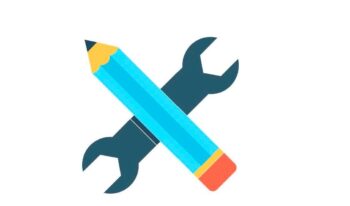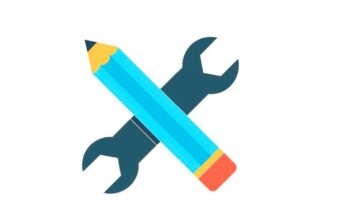QUICK LINKS
3.2.1 Participatory monitoring of animal welfare and human behaviour change
3.2.2 Participatory review and reflection on monitoring results, community action plans, and lessons learned, adapting as needed
HELPFUL TOOLS AND RESOURCES
3.2.1 Participatory monitoring of animal welfare and human behaviour change
Getting communities to monitor their progress is important to show tangible results for their efforts which in turn will encourage further support and effort for future improvements. This process helps indicate whether a community has all the resources it needs, how effectively the group/s are working together and whether they have something important they should share with other communities to disseminate information learned.
It is important to understand all the stages of change, anticipating that groups may be in pre-contemplation regarding some issues, and are likely to be in contemplation and preparation stages of change early on, developing into action and maintenance at the later stages of this process. Be aware though that behaviour can relapse backwards at any stage so refer to the facilitator resource 6. Techniques for Supporting Progress through the Stages of Change for support with this.
Participatory monitoring of animal welfare and behaviour change enables group members to feel proud and good about themselves, therefore more likely to maintain the changes they’ve adopted. Repeating the Animal welfare transect walk (T22), at intervals of one, two or three months, enables the group to monitor changes in the welfare of their animals. Their scores for each animal welfare issue are recorded on the same monitoring chart each time.
Group members then sit together again to reflect on their findings, both positive and negative. Improvement in scores shows the effect of the actions they have taken to improve management of their animals and to prevent welfare problems from occurring. If there is no improvement, or if scores decrease, possible reasons for this need to be discussed. They may identify gaps in their current practices, decide if further actions or closer monitoring are needed and record all relevant details to refer to as they progress.
3.2.2 Participatory review and reflection on monitoring results, community action plans, and lessons learned, adapting as needed
It is essential for the group to critically appraise the performance of both the individual members and the group collectively, for the animal welfare interventions to succeed. These positive, constructive appraisals translate action into learning which in turn translates into further action. The depth of reflection has a major effect on the quality of the action that follows.
Periodic tracking of progress can help group members to:
- Build their interest in the intervention and their commitment to making it work.
- Assess the roles of different stakeholders.
- Understand the changing dynamics in their environment.
- Generate increasing knowledge about actions that work or that are not effective in their community action plan, leading to corrective action or improvement.
- Share responsibility for dealing with challenges.
- Bring peer pressure and peer motivation to influence individual actions.
- Trigger greater understanding, sensitivity, and care for their animals.
This will also enable you and your project to understand their situations and constraints more clearly. Two types of participatory monitoring are essential for the success of the action and reflection process:
- Monitoring of group activities to check that group members and other stakeholders are doing what they agreed to do in their action plan. It is recommended this be a regular activity conducted every group meeting.
- Monitoring of changes in animal welfare and related husbandry and management practices, which can be achieved by repeating the Animal welfare transect walk (T22).
During this process:
- Organize regular group meetings to review individual and collective efforts towards welfare improvement.
- Check and record the activities agreed in the community action plan to ensure that they are carried out.
- Generate resources needed for implementation of the plan, through collective contribution and by forming links with other resource providers.
- Initiate support for implementation of those activities that need external support.
- Repeat the Animal welfare transect walk (T22) after one to three months, in the same way as the first time.
- Analyse the results of the Animal welfare transect walk recording chart.
- Take corrective action to keep the plan on track and/ or to develop new action points.
We have found when refinement of community action plans occurs, it commonly occurs in two ways. First, as the group increases its sensitivity towards its animals, the members choose to use a longer list of welfare changes that they want to measure, and they create more detailed scoring systems for these. They will do these themselves in time. If they do not, you should not introduce more complexity because it is important that the community decides what they feel is useful to measure. Both the animal-based indicators and those relating to resources or management practices increase in number and complexity. Second, group members start to come up with more root causes and the associated welfare-promoting actions that need to be encouraged, and they include these in their community action plan and recording system.
Holding meetings for reflection and learning, lead the group in collectively looking at their activities, to find out whether they were carried out as agreed and whether they led to the desired change in a welfare issue. Have group members sit together to reflect on findings from their participatory monitoring, both positive and negative. The group will find that some issues can be resolved quickly (e.g. within three months), while others take longer, and some will not change despite the group’s action. This stimulates further discussion, which can be further supported through root cause analysis on these specific issues, using the Problem animal tool (T25) or Animal welfare cause and effect analysis (T26). This second level of root cause analysis is an essential step in the process of solving the more difficult or long-term welfare problems facing animals. In addition, the Animal Welfare Practice Gap Analysis (T21) may be useful to use here as it can enable the group to assess its’ progress against initial results of activity if previously conducted, explore the extent to which they have been able to change their animal care practices to meet their animals’ needs, and highlight potential constraints they may be facing in adopting these new practices.
If improving the quality of animal health service providers was an issue the group prioritized to address, implementing the Community Score Card (T35) activity anew and comparing results can help inform the group’s reflection and learning as it will enable them to evaluate changes from initial results. To aid reflection and learning and development of collective actions the following facilitator resources are useful: Dependency Analysis (T12), Income, expenditure, and credit analysis (T13), Group inter-loaning analysis (T14). In addition, the Cost Benefit analysis (T15) can generate motivation to act by enabling communities to weigh the costs and benefits of action vs inaction for both animals and people.
In addition, it can also be useful to the group’s reflection and learning to ask the group to look back further, comparing the situation before they started to implement their community action plan with the situation now. Using the Before and Now Analysis (T11b) tool can support this process. The group analyses which actions have been most effective and which less effective and the reasons why. This helps participants to learn, to change their interventions if necessary and to plan for continuing action. Matrix ranking (T9) can be used to compare the relative success of the activities taken up. During this part of the analysis, it is also useful to discuss the achievements and difficulties faced while working together as a group, with reasons for these, and how any difficulties were overcome. The resource 14. Overview of Community Group Formation Process, Challenges, and Factors Influencing Group Success has a section on Common Challenges and Solutions Related to Community-based Organizations/ Governance which can support this process. When groups are faced with complex problems, they have yet to be able to solution, consider using Open Ended Story Telling (T24c) to help them to brainstorm possible solutions to the complex issue they are facing.
Community groups will go through an iterative planning process adapting their action plans throughout the course of the project. Upon achievement of desired results, encourage the group to decide whether to initiate community action planning to address new priorities or issues. In this case, support the group to identify new priorities and enable all participants to progress through the stages of change for any new behaviours they decide they wish to adopt to improve welfare issues. This is one of the key measures that can show that a group has become successful in institutionalizing behaviour change and taking collective and individual actions to see improvement in animal welfare in their communities/members. When groups add new issues and behaviours to their plan this is also an indicator of a successful group.
You are likely to find that in the early stages the animal-owning group needs a lot of support and capacity-building, which relies heavily on your skill as a facilitator. As the group becomes more familiar with animal welfare issues and confident in solving them, they will drive this action-reflection-action cycle themselves. This is a sure sign of the success of your work. This is also the stage where you start to discuss how long they will need your support as a facilitator and over what period you should withdraw from the group. Planning for your eventual withdrawal is essential to support the growth of a self-reliant group and not increase its dependency on you. In our experience it takes the group 12 months to reach this stage, and a further 12 to 18 months of strengthening until you finally withdraw.
Throughout these discussions, record any key insights in your Project Action Tracker for use in reflecting and adapting your own project plans and strategies as needed to support the group’s continued progress. Update your Behaviour Change Planning Table and refer to Guidance on Identifying Effective Behaviour Change Strategies as appropriate to supporting your adaptive management process based on lessons learned from these monitoring, learning and reflection processes.
Tools and resources helpful to supporting this step include:
PLA tools
Matrix ranking (T9)
Before and Now Analysis (T11b)
Dependency Analysis (T12)
Group Inter-Loaning Analysis (T14)
Cost benefit Analysis (T15)
Animal Welfare Practice Gap Analysis (T21)
Animal welfare transect walk (T22)
Income, Expenditure & Credit Analysis (T13)
Open ended story telling (T24c)
Problem animal tool (T25)
Animal welfare cause and effect analysis (T26)
Community Score Card (T35)Facilitator Resources
6. Techniques for supporting progress through stages of change
14. Overview of Community Group Formation Process, and Common Challenges and Factors Influencing Group Success
12. Behaviour Change Planning Table
13. Guidance on Identifying Effective Behaviour Change Strategies Based on COM-B diagnosis
20. Project Action Tracker


